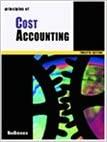Answered step by step
Verified Expert Solution
Question
1 Approved Answer
NEED THE ANSWERS FOR THE SQUARES WITH THE RED X ! ! ! ! ! ! ! ! ! ! ! ! ! Required information
NEED THE ANSWERS FOR THE SQUARES WITH THE RED X
Required information
The following information applies to the questions displayed below.
Springsteen Company manufactures guitars. The company uses a standard, joborder costaccounting system in two production departments. In the Construction Department, the wooden guitars are built by highly skilled craftsmen and coated with several layers of lacquer. Then the units are transferred to the Finishing Department, where the bridge of the guitar is attached and the strings are installed. The guitars also are tuned and inspected in the Finishing Department. The diagram below depicts the production process.
Each finished guitar contains seven pounds of veneered wood. In addition, one pound of wood is typically wasted in the production process. The veneered wood used in the guitars has a standard price of $ per pound. The other parts needed to complete each guitar, such as the bridge and strings, cost $ per guitar. The labor standards for Springsteen's two production departments are as follows:
Construction Department: hours of direct labor at $ per hour Finishing Department: hours of direct labor at $ per hour
The following pertains to the month of July.
There were no beginning or ending workinprocess inventories in either production department.
There was no beginning finishedgoods inventory.
Actual production was guitars, and guitars were sold on account for $ each.
The company purchased pounds of veneered wood at a price of $ per pound.
Actual usage of veneered wood was pounds of the wood purchased during July.
Enough parts bridges and strings to finish guitars were purchased at a cost of $
The Construction Departme
Required information
The following information applies to the questions displayed below.
Springsteen Company manufactures guitars. The company uses a standard, joborder costaccounting system in two production departments. In the Construction Department, the wooden guitars are built by highly skilled craftsmen and coated with several layers of lacquer. Then the units are transferred to the Finishing Department, where the bridge of the guitar is attached and the strings are installed. The guitars also are tuned and inspected in the Finishing Department. The diagram below depicts the production process.
Each finished guitar contains seven pounds of veneered wood. In addition, one pound of wood is typically wasted in the production process. The veneered wood used in the guitars has a standard price of $ per pound. The other parts needed to complete each guitar, such as the bridge and strings, cost $ per guitar. The labor standards for Springsteen's two production departments are as follows:
Construction Department: hours of direct labor at $ per hour Finishing Department: hours of direct labor at $ per hour
The following pertains to the month of July.
There were no beginning or ending workinprocess inventories in either production department.
There was no beginning finishedgoods inventory.
Actual production was guitars, and guitars were sold on account for $ each.
The company purchased pounds of veneered wood at a price of $ per pound.
Actual usage of veneered wood was pounds of the wood purchased during July.
Enough parts bridges and strings to finish guitars were purchased at a cost of $
The Construction Department used directlabor hours. The total directlabor cost in the Construction Department was $
The Finishing Department used directlabor hours. The total directlabor cost in that department was $
There were no directmaterial variances in the Finishing Department.
Complete the following cost variance report for July. Springsteen Company investigates all variances greater than $ or Use Exhibit Indicate the effect of each variance by selecting "Favorable" or "Unfavorable". Select "None" and enter for no effect ie zero variance Round "Percentage of Standard Cost" to decimal places.
Answer is complete but not entirely correct.
tableSPRINGSTEEN COMPANYCost Variance ReportFor the Month of JulyConstruction Department,Finishing DepartmentAmount,,tablePercentagof StandarCosttableVarInvesRecAmount,,,tablePercentageofStandardCosttable

Step by Step Solution
There are 3 Steps involved in it
Step: 1

Get Instant Access to Expert-Tailored Solutions
See step-by-step solutions with expert insights and AI powered tools for academic success
Step: 2

Step: 3

Ace Your Homework with AI
Get the answers you need in no time with our AI-driven, step-by-step assistance
Get Started


